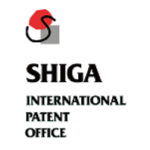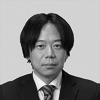The patent law in Japan is explicit in its definition of what constitutes a patentable invention. This article delves into the nuances of patent eligibility for bio inventions, particularly those related to biology and pharmaceuticals. Case studies and comparative legal analysis with the US will be used in an exploration of which bio inventions are deemed patent eligible and in providing practical guidance for patent applications.
Patent eligibility under the Japanese Patent Act
Article 2(1) of the Japanese Patent Act defines an invention as the "creation of a technical idea utilising laws of nature". Additionally, Article 29(1) requires that an invention be "industrially applicable" to qualify for a patent. These dual criteria of a technical idea and industrial applicability form the cornerstone of patent eligibility in Japan.
Industrial applicability in bio inventions
In the realm of biology and pharmaceuticals, Japan distinguishes between methods applied to humans and non-humans. Methods for operating on, treating, or diagnosing non-human animals are patentable. However, methods for operating on, treating, or diagnosing humans are not patentable, as they lack industrial applicability. This exclusion extends to medical activities commonly practised by medical doctors.
Industrially inapplicable inventions
Inventions related to the treatment or diagnosis of humans are not eligible for patents in Japan. The Japan Patent Office (JPO) rejects methods involving:
Operating on a human;
Treating a human; and
Diagnosing a human.
Examples of non-patentable methods are as follows:
Treating a human:
Installing artificial organs (e.g., wearing an artificial arm);
Preventing diseases (e.g., cavity prevention, cold prevention);
Preliminary procedures for treatment (e.g., arranging electrodes for electrical treatment);
Nursing procedures (e.g., preventing bedsores); and
Health maintenance (e.g., massages).
Diagnosing a human:
Judging physical or mental conditions for medical purposes; and
Planning treatment or surgical operations based on these conditions (e.g., making a judgement on a brain infarction from an MRI scan).
Industrially applicable medical inventions
Despite the restrictions on methods for the treatment or diagnosis of humans, certain medical inventions are considered patentable if they meet the criterion of industrial applicability. These include the following.
Product-type claims
Violations of industrial applicability do not extend to ‘product-type’ inventions such as medical devices and drugs. Examples include:
Medical devices;
Treatment systems; and
Pharmaceutical compositions.
Examples of a claim are:
A “medical device comprising…”;
A “treatment system comprising…”; and
A “pharmaceutical composition comprising…”
Method for actuating a medical device
Inventions focusing on functions carried out by medical devices are patentable unless they involve steps performed by a doctor or actions on a human body performed by a device. For example:
Operating a device without direct therapeutic intervention by a doctor; or
A device performing acts on a human body (incision or resection of a part of a patient by a device, or application of radiation, electromagnetic waves, or sound waves on a part of a patient by a device).
Methods for collecting samples
Methods for collecting samples or data from a human body are patentable if there is no presumption that the samples will be returned to the body. Examples include:
Collecting oral mucosa;
A preliminary treatment method for measuring the structure or function of each human organ, such as preventing uneven application of ultrasound gel; and
Comparing collected data with reference data for analysis.
An example of a claim is a “method for examining the susceptibility of a subject to disease Y, comprising a step of determining the type of a specific base in the X gene of the subject and comparing the base in light of a criterion in which when the base type is A, the susceptibility is low, and when the base type is G, the susceptibility is high”.
Methods for processing samples
If there is no intent to return samples collected from a human body, the invention is patentable. Patentable examples include:
Manufacturing medical drugs or materials from collected samples as a raw material;
Manufacturing intermediate products of medical drugs or medical material by using the collected samples as a raw material; and
Analysing intermediate products of medical drugs or materials manufactured from the collected samples.
DNA/RNA patent eligibility
In Japan, various types of DNA and RNA – including genomic DNA, complementary DNA (cDNA), cell-free DNA, messenger RNA, and micro RNA – are patent eligible. Unlike the US, Japan does not require "markedly different characteristics". Key considerations include:
Novelty and inventive step issues rather than eligibility;
DNA sequences are considered information and are thus ineligible; and
Gene markers are treated as mere ‘genes’.
Gene segments derived from the human body are eligible, but the process of tissue extraction is not, as it is deemed a surgical act lacking industrial applicability.
Comparative legal analysis
Patent eligibility varies globally. Japan's examination is relatively lenient compared with other jurisdictions. The following comparisons illustrate differences with the US.
Case examples for preparing claims
Case 1: Treatment method
Claim 1: A method of treating lung cancer in a subject, the method comprising administering to the subject an effective amount of drug X.
The above claim is patent eligible in the US but not in Japan.
Claim 1’: An agent for the treatment of lung cancer comprising drug X.
A method for treating a human is ineligible subject matter in Japan. Amending a ‘method-type’ claim to a product-type claim is an effective strategy in Japanese practice, as shown in claim 1’.
Case 2.1: Treatment method
Claim 1: A method for treating a tumour in a person’s neck, the method comprising affixing a first electrode element to the person’s head and affixing a second electrode element to the person’s chest.
Such a claim is patent eligible in the US but not in Japan.
Claim 1’: A device for treating a tumour in a person’s neck, the device comprising a first electrode element to be affixed to the person’s head and a second electrode element to be affixed to the person’s chest.
A method for treating a human is ineligible subject matter in Japan. Amending a method-type claim to a product-type claim is an effective strategy in Japanese practice, as shown in claim 1’.
Case 2.2: Treatment method
Claim 1: A method for treating a tumour in a person’s neck, the method comprising affixing a first electrode element to the person’s head and affixing a second electrode element to the person’s chest.
The above claim is patent eligible in the US but not in Japan.
Claim 1’: A method of applying, by a device, an alternating voltage between a first electrode element and a second electrode element.
Amending a method-type claim to a ‘method for actuating a medical device’ claim is an effective strategy in Japanese practice.
Case 3: DNA
Claim 1: An isolated cDNA sequence according to SEQ ID No:1, or a polynucleotide that has at least 90% identity to the cDNA sequence of SEQ ID No:1, wherein the polynucleotide encodes a polypeptide with alpha-farnesene synthase activity.
The above claim is patent eligible in Japan and the US.
Claim 1’: An isolated polynucleotide according to SEQ ID No:1, or a polynucleotide that has at least 90% identity to the nucleotide sequence of SEQ ID No:1, wherein the polynucleotide encodes a polypeptide with alpha-farnesene synthase activity.
Genomic DNA is not eligible in US practice. cDNA does not exist in the human body, so to avoid patent ineligibility, “cDNA” might be better than “polynucleotide”. On the other hand, Japanese practice does not need to be concerned about this.
Case 4: Diagnosis
Claim 1: A method for detecting breast cancer, comprising analysing a germline alteration of gene X from a human sample.
“Analysing” or “comparing” might be considered an abstract mental process in US practice. A JPO examiner would not accept “diagnosis” as claim language.
Claim 1’: A method for treating a patient with breast cancer, wherein the method comprises:
Determining whether a test sample from the patient comprises a germline alteration of gene X; and
If the test sample from the patient comprises a germline alteration of gene X, administering to the patient an effective amount of drug Y.
This claim might be considered transformative in US practice. A treatment is ineligible subject matter in Japan.
To enhance understanding, please refer to the following chart, which is a comparative analysis between the JPO and the USPTO.
Type of invention | JPO | USPTO | |
Medical | Medical treatment of the human body | × (※) | 〇 |
| Medical treatment of animals | 〇 | 〇 |
| Method of diagnosis or extracting tissue from a human body | 〇 | 〇 (※) |
| Method of non-medical, but surgical, treatment (for example, tattoos) | × | 〇 |
| Points to be noted | ※ In some cases, medical treatment of a human body is exceptionally allowable and fulfils patent eligibility. | ※ Combination claims – i.e., claims combining a diagnostic method and a treatment method – are patent eligible on the ground that the combination claim is deemed to be an application of a law of nature. The treatment method does not need to be inventive, since a recent decision by the US Court of Appeals for the Federal Circuit did not consider whether the treatment in question was routine or conventional. |
Software/computer | Apparatus/system | 〇 | 〇 |
| Method | 〇 | 〇 |
| Program | 〇 | × |
| Program product | × | × |
| Record device storing program | 〇 | 〇 |
| Data structure | 〇 | × |
| Signal | × | × |
| Points to be noted | Information processing by software is concretely realised by using hardware resources. | The claimed invention has to cover one of the aforementioned four subject matters and must not cover subject matters including judicial exceptions (two-step analysis in determining patent eligibility): Whether a claim is subjected to abstract ideas; and If so, whether an element is added beyond abstract ideas ‘significantly more’. |
Product of nature | Genome DNA | 〇 | × |
Complementary DNA | 〇 | 〇 | |
Points to be noted | A gene segment derived from the human body fulfils patent eligibility; however, the process to extract tissue from the human body is deemed an act of surgery and therefore it does not have industrial applicability. | Even if an isolated piece of DNA is identical to one in a human body, it will be patentable if the claim is proved to have industrial applicability. | |
Key takeaways on patenting bio inventions in Japan
To navigate the complexities of patent eligibility, applicants should consider switching from method-type claims to product-type claims or method for actuating a medical device claims. Avoiding claim language such as "diagnosis" may also be beneficial.
While the Japanese criteria for patent eligibility may be more lenient, careful claim drafting is essential to meet the standards of multiple jurisdictions.











